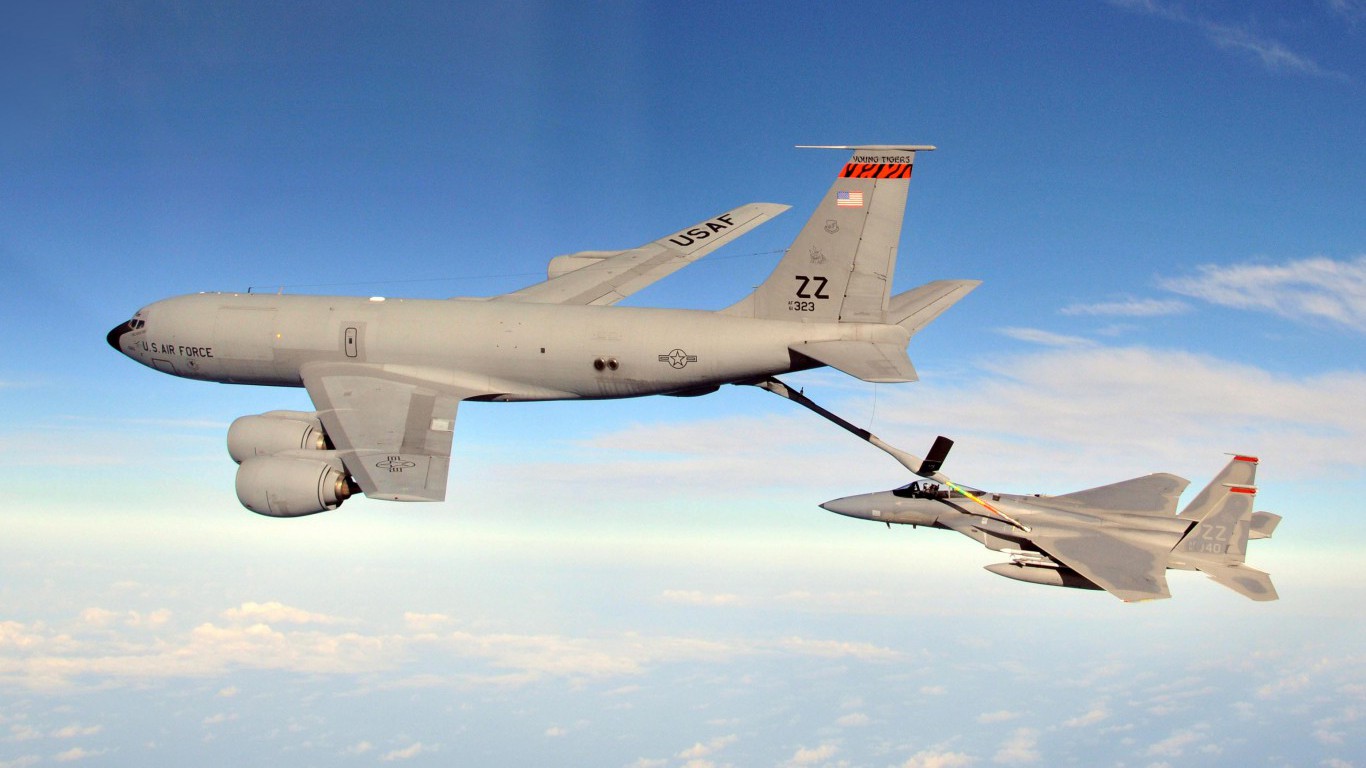
Boeing Co. (NYSE: BA) reported second-quarter 2018 results before markets opened Wednesday morning. The aerospace company posted adjusted diluted earnings per share (EPS) of $3.33 on revenues of $24.26 billion. In the same period a year ago, the company reported EPS of $2.49 per share on $23.05 billion in revenues. Second-quarter results also compare to consensus estimates for $3.26 in EPS and $24.04 billion in revenues.
The number that matters most to Boeing, and to its shareholders, is operating cash flow, and second-quarter cash flow totaled $4.68 billion, down by 5% compared to the prior year quarter. Operating cash flow totaled $13.34 billion in 2017, and at the end of the first quarter, the company forecast cash flow for this year at $15.5 billion. That forecast was not changed.
Boeing raised its revenue forecast by $1 billion to a new range of $97 billion to $99 billion for the year. The company said that defense volume and services growth drove the increase. Boeing also raised its margin guidance from approximately 11.5% to more than 11.5%.
Adjusted EPS guidance remained in a range of $14.30 to $14.50. The company raised that estimate last quarter.
CEO Dennis Muilenburg said:
We booked 239 net commercial airplane orders in the quarter, which included 59 787s – further demonstrating the value this airplane family brings to our customers. Solid progress continued on the 777X program with the first two test aircraft currently being built in the factory. … Continued services growth, increasing defense volume and strong performance of our commercial business, as well as our positive market outlook, give us the confidence to raise our revenue and Commercial Airplanes margin guidance for the year.
The company maintained its previous forecast for 2018 commercial jet deliveries at 810 to 815, far above 2017’s record level of 763 deliveries. The company delivered 194 commercial jets in the first quarter of which 137 were 737s and 38 were 787s.
Analysts are looking for third-quarter EPS of $3.71 and revenues of $24.91 billion. For the full year, current estimates call for EPS of $14.56 and revenues of $98 billion.
Boeing’s deferred production costs on the 787 program fell to $24.69 billion, down by $450 million sequentially. Tooling and other non-recurring costs for the program also declined, from $3.04 billion at the end of the first quarter to $2.9 billion.
The company’s backlog of commercial jets now stands at nearly 5,900 airplanes, valued at $416 billion at contract (not list) prices. The value of the backlog rose by $1 billion sequentially. Total backlog rose from $486 billion to $488 billion in the quarter.
Global services revenue increased by 15% to $4.09 billion, and defense revenue rose by 9%. Defense segment profits fell by 15%, which Boeing attributed to higher costs in its KC-46A tanker program. The company continues to expect first delivery of the new tanker in October.
Boeing’s effective tax rate in the quarter was 15.1%, down from 29% in the year-ago quarter. The company again made no mention in its press release of any potential impact from tariffs.
Boeing’s income tax expense for the quarter totaled $752 million, down from $1.28 billion in the same quarter last year. After-tax income rose by $1.35 billion.
Boeing exceeded both earnings and revenue expectations, but shares still dropped in premarket trading Wednesday. There is still uncertainty about the impact of a trade war with China and rising costs in the defense business could be a harbinger of the effect that will have on the company’s commercial business. Investors also would have liked to see a boost in operating cash flow guidance.
On last look, the stock traded down about 2.2% at $350.00 in a 52-week range of $223.02 to $374.48. The consensus price target as of last night was $398.04.
It’s Your Money, Your Future—Own It (sponsor)
Retirement can be daunting, but it doesn’t need to be.
Imagine having an expert in your corner to help you with your financial goals. Someone to help you determine if you’re ahead, behind, or right on track. With SmartAsset, that’s not just a dream—it’s reality. This free tool connects you with pre-screened financial advisors who work in your best interests. It’s quick, it’s easy, so take the leap today and start planning smarter!
Don’t waste another minute; get started right here and help your retirement dreams become a retirement reality.
Thank you for reading! Have some feedback for us?
Contact the 24/7 Wall St. editorial team.

